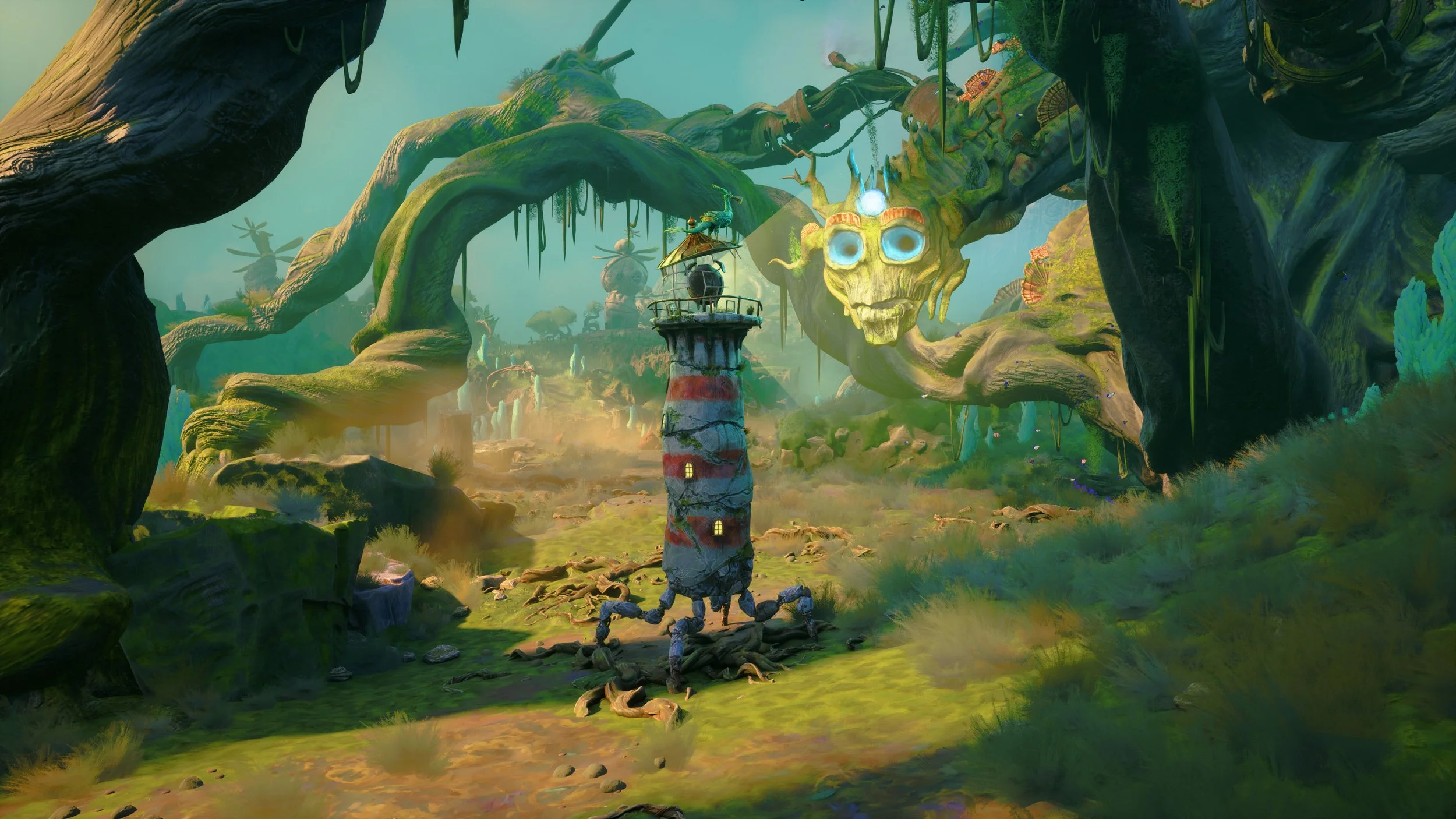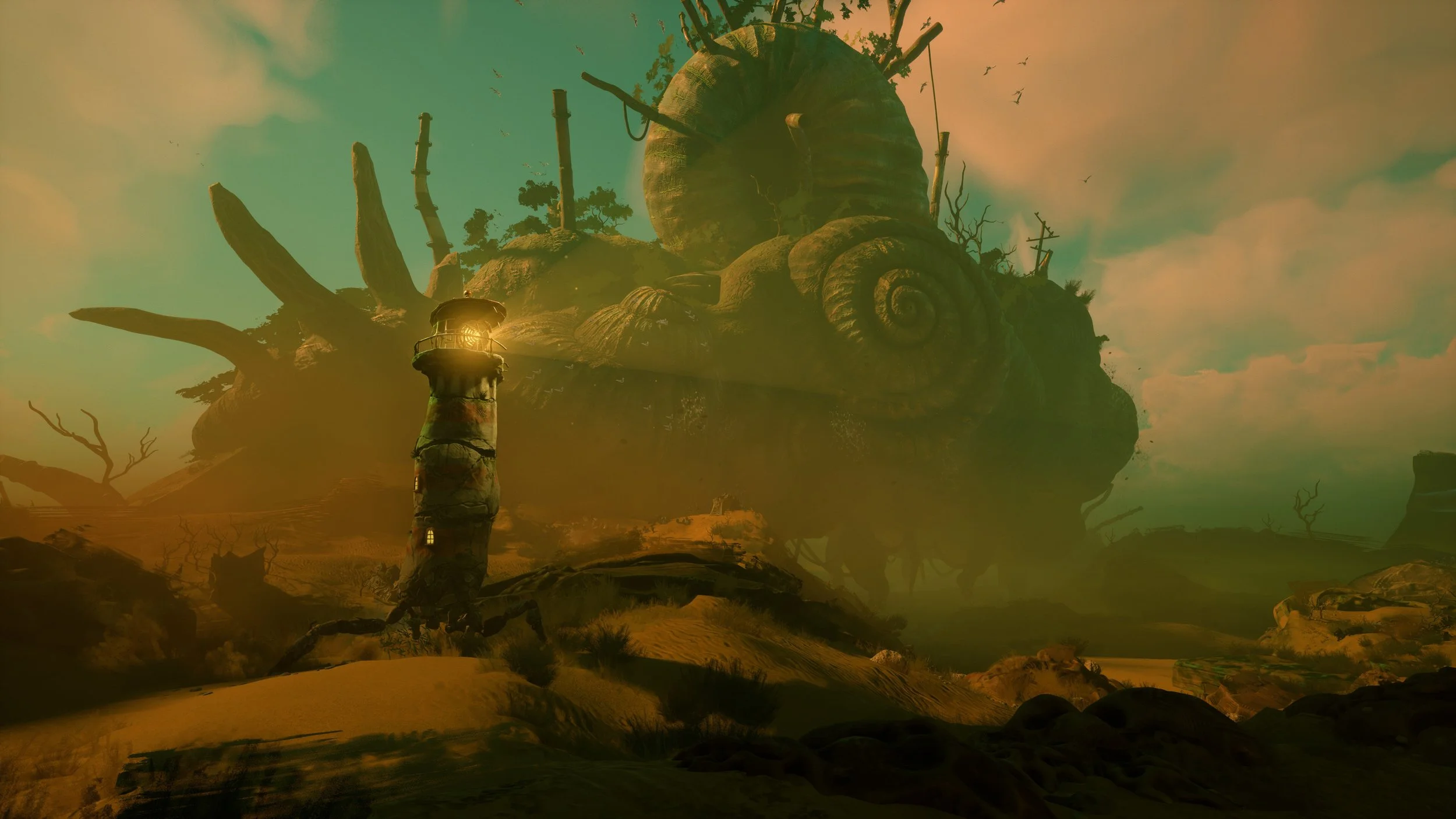Review | Keeper - Finding Your Place
From the start of life to finding your place in the world, this comforting yet eccentric lighthouse adventure game has much to offer. Keeper had me struggling to put the game down at the end of every play session.
Keeper is developer Double Fine’s latest creation that puts you in a beautiful and quirky world brimming with life. You play as a charming anthropomorphic lighthouse that stumbles its way through a painted canvas-like world and partners with a giant sea-dodo-bird named Twig (who has found comfort perching on the railing around your light). Keeper’s world is filled with adorable creatures that react to your light, simple yet effective puzzles that don’t overstay their welcome, and a sense of wonder that left me in awe. This adventure puzzle platformer also has a quietly doled-out narrative that feels part hero’s journey and part found family and ends up being surprisingly thoughtful, all without a single line of written or spoken dialogue.
Mechanically, the game proves to be simple: you walk through a mostly linear level (which opens up slightly in the latter half of the game) and move your light around, focusing it to increase its intensity or sending Twig to investigate curious objects. With the lack of HUD, Keeper allowed me to concentrate on the enchanting geography and invited me to figure out how this adorable lighthouse fits into and interacts with this painterly world.
As I stumbled through each area, I found myself often gauging the reactivity of the environment as I shone my light into and onto various dark crevices, flowers, and gaps – really anything on my screen. To my surprise, nearly every object in this whimsical world has a reaction to the spotlight! Walking under a rocky crag, I focused my light on these peculiar purple flower buds sprinkled along the path, empowering them to bloom into these sea anemone-like stems that lit up and illuminated the path towards a scenic vista. At first, the focusing of the light causes simple environmental reactions, such as vines growing into a bridge to cross a gap or activating light-based mechanisms to open doors. However, this evolved as I found new towers, symbols, and items. Soon, the simple mechanics turned into slightly more complex puzzles as it incorporated Twig into the solutions.
In later puzzles, intensifying the light onto a translucent sun-shaped object that sat on top of a pillar caused time to revert to the past, changing Twig’s form. This caught me off guard as I was not expecting my logic in solving the previous puzzles to be challenged. What am I supposed to do with this new egg that was formerly Twig? Thankfully, reactivating the object reverts Twig – and the world – back to its present-day iteration. This realisation now had to be incorporated into puzzle solutions, as Twig’s new form means they can be heavy enough to lower things like a weighted pedestal that’s controlling the door. I now had to consider where Twig was perched, in what order to activate these translucent sun-and-moon-shaped objects that control time, and where I was positioned! This new addition to the puzzle formula helped keep Keeper feeling fresh as I moved through the story. That and a couple of more surprises that came in the form of new mechanics coinciding with story beats, but I believe those are best saved to discover on your own.
While traversing the world, I noticed several branching routes that strayed from the main pathway that presumably led to side puzzles or vistas. I often do not deviate from the course in adventure-based puzzle games, but I was glad to see that additional content was included for anyone who enjoys a little extra.
The atmospheric tone of Keeper is bolstered by the cinematic camera angles that greet you when entering new environments. As I stepped into my first cave, I was stunned by the view: an orange glow radiating through the rocky slats blocking the opening of the cave, filling the darkness with light, while the lighthouse stared to the right with a stoic Twig proudly perched on top. While you are in control of the lighthouse, Keeper often feels distinctly handcrafted in its direction and diorama-like in its staging. These moments come frequently in Keeper as I progressed through the game, encountering new landscapes and scenery. I did find myself fighting the camera on occasion — as I attempted to get better angles to solve certain puzzles — but it did not detract from the overall enjoyment of the game.
As you progress through the game, trekking towards the peak of the largest mountain in this region, the lighthouse becomes closer to defeating the source of the swarm. The central “villain” in this game comes in the form of these dark purple orbs that swarm and infect the area. From corrupted grounds to dead creatures, the swarm leaves a disease that only the lighthouse can remedy. We are not sure of the goal of the swarm, but we do see its impact. Often, I entered a new village or cave only to see damaged houses and barbed purple vines wrapped around pillars and rotted tree stumps. The destruction these orbs leave in their wake feels tangible. The lighthouse’s light helps (both literally and metaphorically) renew life back into the area as you cleanse the swarm’s pestilence from the grounds. As a relief to the player, this revitalisation of the world filled me with a sense of hope when I saw these previously distraught landscapes exude spirit once more.
It is unclear exactly where you (the creature that is the lighthouse) came from, but my interpretation was that you are not from this part of the planet. Having a companion in the form of Twig, who is native to this world, allows both the player and the lighthouse to feel welcomed into this new territory. We first meet Twig as they are escaping the swarm and land on the lighthouse’s head, unknowingly activating your gleaming light that keeps them safe. The curiosity and friendliness of the creatures that are endemic to the area welcomed me and made me feel part of their society. Twig’s friendship furthers this feeling as they become comfortable enough to travel with and assist you with your adventure. These actions felt allegorical to me about welcoming strangers into a community despite their origins or appearance. The creatures (the community) allowed me (a stranger) to exist in their towns without any resistance. Even though I looked different and potentially intimidating to them, the native creatures never cowered or ran away, but met me with curiosity. Later story beats emphasise this message as the native creatures help you defeat the evil swarm that plagues their land and treat the lighthouse with the camaraderie of one of their own.
My time with Keeper was relatively short at only six hours, but every moment felt meaningful. Double Fine and Lee Petty’s team have crafted a cohesive experience in Keeper. From the soundscape to the symbolism within the narrative, the game was confident in how it wanted the player to feel in every moment. In the beginning, I felt like a giant. Later, I felt so small as I discovered more about this stunning world. Keeper’s introinstilled in me a fascination that evolved the more time I spent with this game. By the end, I was left with a sense of wonder and admiration that still lingers to this day.









